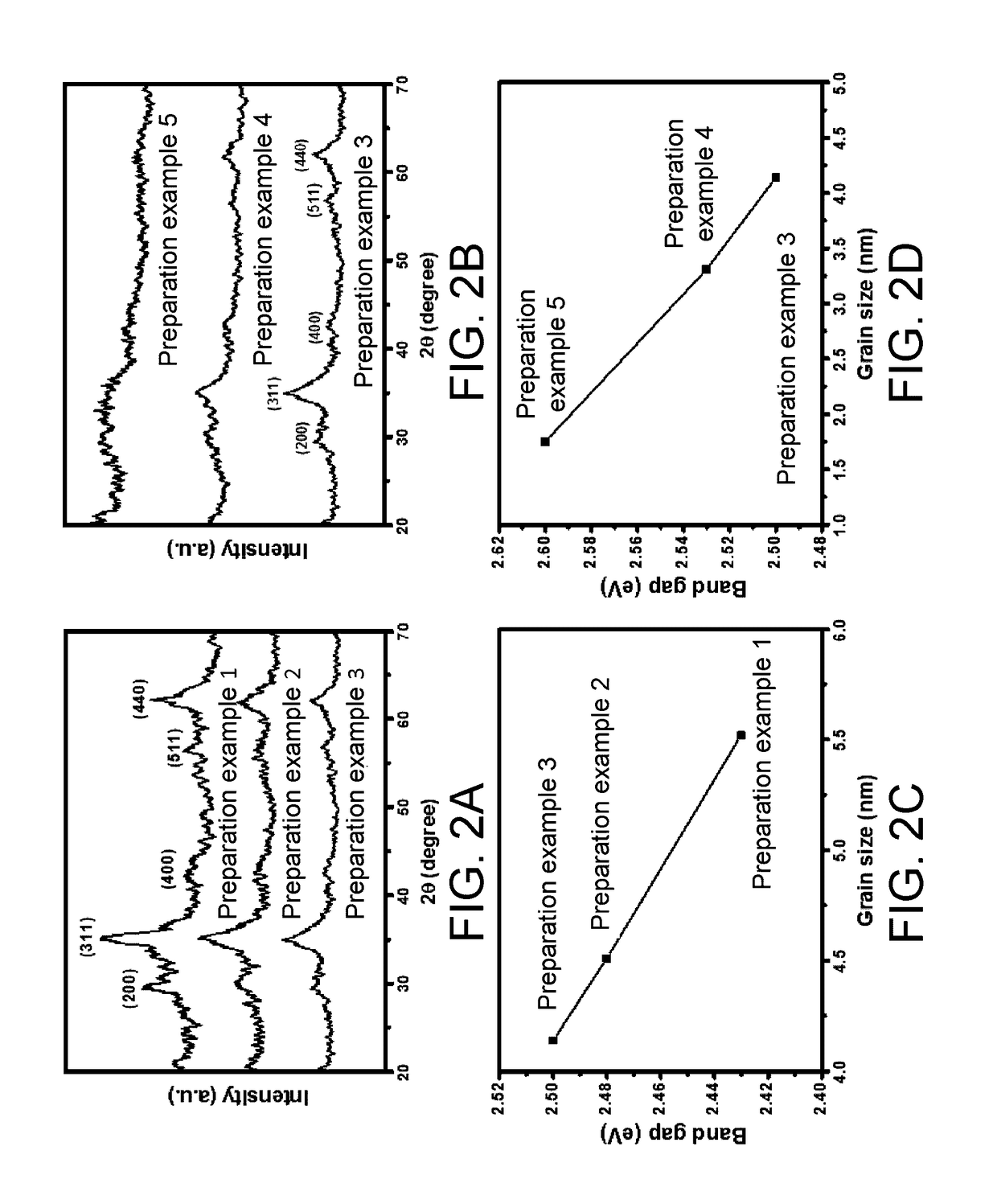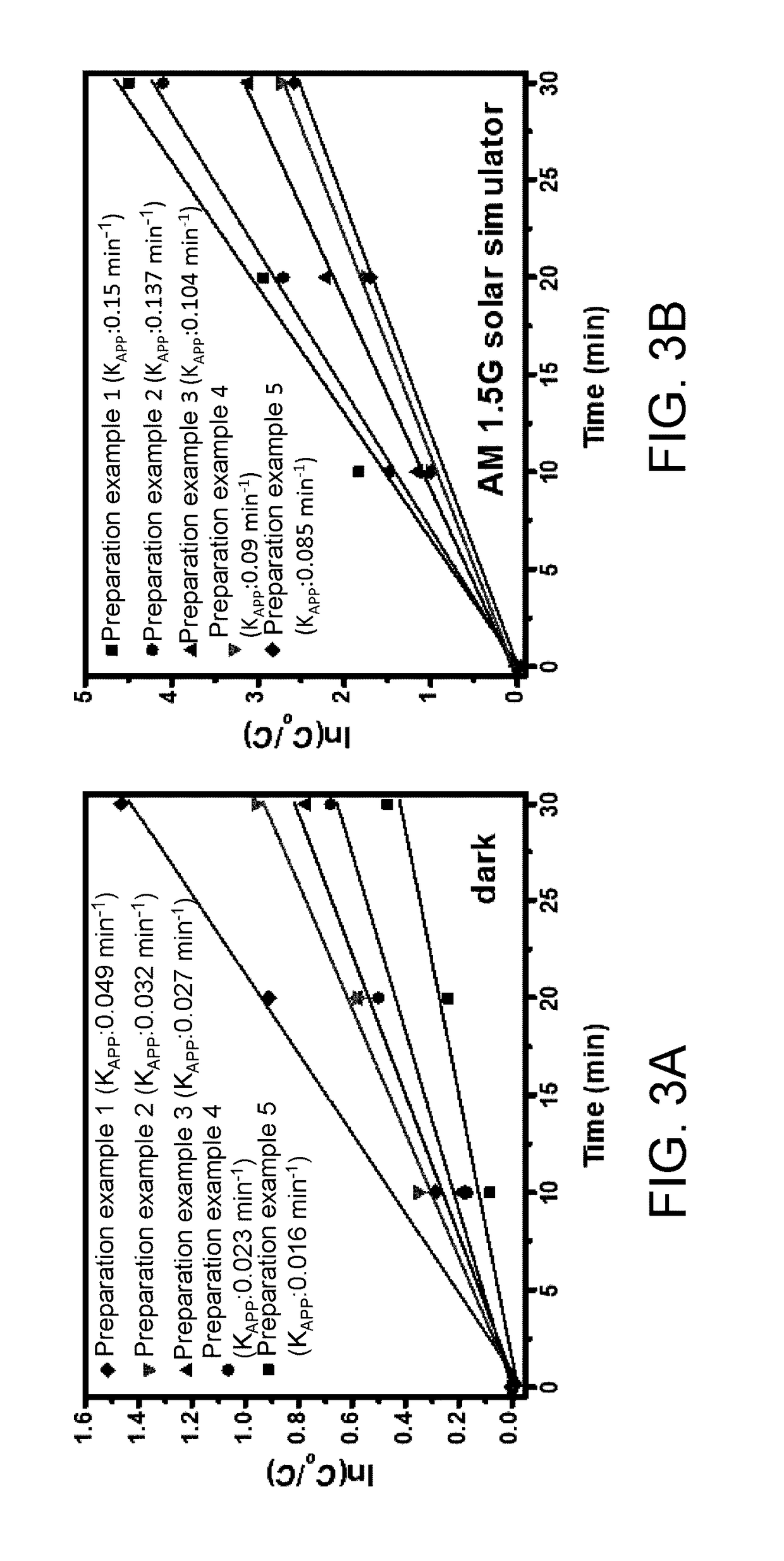Composite photocatalyst, manufacturing method thereof, kits containing composite photocatalyst, and bactericide photocatalyst
a technology of composite photocatalyst and manufacturing method, which is applied in the field of photocatalysts, can solve the problems of limited application and environmental pollution, and achieve the effects of convenient recycling without contamination, effective and environmental friendly, and rapid degradation of pollutants
- Summary
- Abstract
- Description
- Claims
- Application Information
AI Technical Summary
Benefits of technology
Problems solved by technology
Method used
Image
Examples
preparation examples 1 to 5
[0044]Referring to the concentrations and ingredients shown in the following Table 1, the samples having the Zn(ClO4)2 solution as the organic phase and the NaOH solution as the aqueous phase are prepared. The photocatalyst nanocrystal samples of Preparation examples 1 to 5 are prepared by using Zn(ClO4)2 solutions in different concentrations of 0.0472M, 0.0236M, 0.0118M and NaOH solutions in different concentrations of 0.4 M, 0.8 M, 2.0 M. Zn(ClO4)2 and Fe(NO)3 are dissolved in 22.5 ml of ethanol, and the molar ratio of Zn ions and Fe ions is 1:2. The organic phase is prepared by adding 3.75 ml of the ethanol solution having Zn(ClO4)2 and Fe(NO)3 dissolved therein to 3.75 ml of chloroform. The aqueous phase is prepared by dissolving NaOH in 22.5 ml of distilled water. Then, the aqueous phase is dropped into the organic phase alongside the inner wall of the container to form the layered interfacial reaction system. In the layered interfacial reaction system, the aqueous phase is loc...
experiment examples 1-3
[0051]The composite photocatalyst is prepared by mixing the platinum nanocrystals and photocatalyst nanocrystals in the solution in an appropriate molar ratio. Using Pt / ZnFe2O4 composite photocatalyst as an example, ZnFe2O4 photocatalyst nanocrystals are dispersed in the distilled water to prepare the ZnFe2O4 photocatalyst nanocrystal suspension solution. Then, the platinum nanocrystal suspension solution (pH value set to 7) is added to the ZnFe2O4 photocatalyst nanocrystal suspension solution, and the mixture solution is agitated at 25° C. and 200 rpm oscillation using a shaker for 30 minutes. Afterwards, the mixture solution is centrifuged, and the collected precipitates are repeatedly cleaned with an appropriate amount of water and ethanol, centrifuged, and the collected precipitates are finally dried at 80° C. overnight to obtain the composite photocatalyst. The samples of Experiment examples 1-3 are prepared by mixing the platinum nanocrystals and ZnFe2O4 photocatalyst nanocrys...
PUM
| Property | Measurement | Unit |
|---|---|---|
| particle size | aaaaa | aaaaa |
| particle size | aaaaa | aaaaa |
| molar ratio | aaaaa | aaaaa |
Abstract
Description
Claims
Application Information
 Login to View More
Login to View More - R&D
- Intellectual Property
- Life Sciences
- Materials
- Tech Scout
- Unparalleled Data Quality
- Higher Quality Content
- 60% Fewer Hallucinations
Browse by: Latest US Patents, China's latest patents, Technical Efficacy Thesaurus, Application Domain, Technology Topic, Popular Technical Reports.
© 2025 PatSnap. All rights reserved.Legal|Privacy policy|Modern Slavery Act Transparency Statement|Sitemap|About US| Contact US: help@patsnap.com



